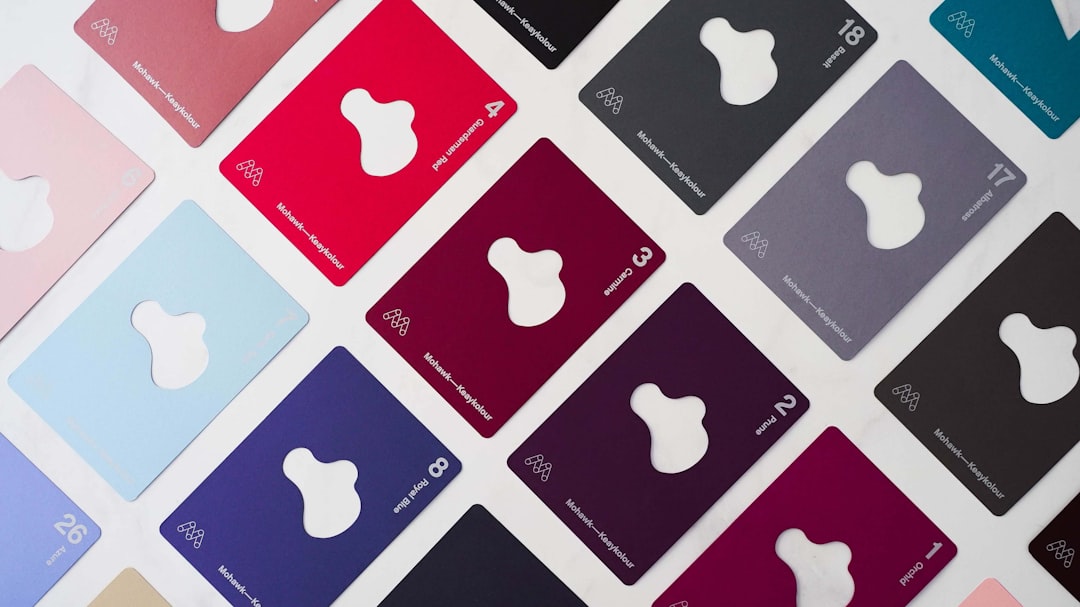The ultimate guide to the branding process
The ultimate guide to the branding process: Discover proven strategies to professionally build and successfully position your brand.

Introduction: What is branding and why is it important?
Branding is the process by which we create a unique identity for a company, brand, or product. It goes far beyond simply designing a logo or choosing corporate colors. In fact, branding includes every interaction a customer has with the brand, including messages, values, design, and user experience. The goal of branding is to create an emotional connection between the brand and its target group. We're talking about creating an image that is anchored in consumers' minds and helps us stand out from the competition.
Strong branding is critical because it builds trust and promotes loyalty. People often identify with brands that represent their values or share their vision. To make this possible, we need to ensure that every element of the brand — from visual identity to tonality — remains consistent. Customers expect continuity because they only trust their decisions when all touch points of a brand match.
There are many aspects that make up successful branding:
- visual identity: With logos, colors and typography, we convey at first glance what our brand stands for.
- Strong brand core: Our values, mission, and vision define the stories we tell.
- communication strategies: Content relevant to the target group as well as clear and authentic messages create trust.
- customer experiences: Every interaction — online and offline — influences how our brand is perceived.
Successful branding not only supports recognition, but also helps to increase our market value. It is therefore the key to building a stable company that resonates both rationally and emotionally with the target group.
Step 1: Understand Your Brand — Define Your Core Values and Mission
In order to build a strong brand, it is crucial that we first understand the essence of our brand. This starts with a clear definition of our core values, as they form the moral and entrepreneurial compass of every identity.
Why are core values important?
Core values determine how we make decisions, how we present our company to the outside world and how we interact with our customers and partners. They are the irrevocable principles that guide us in the long term. Without these values, a brand can appear inconsistent and inaccessible.
How do we define our core values?
- Let's reflect our corporate vision: What are our long-term goals? Let's think about how we want to influence the future of our target group.
- Let's focus on our strengths: What characteristics make us stand out? What do we want to be known for?
- Let's get feedback: Within the team and from existing customers, we can find out how our brand is perceived. These perspectives give us important clues.
Example: A sustainable clothing company could define values such as environmental awareness, transparency and quality.
Defining the mission
Our mission describes the main purpose of our existence and specifies how we implement our core values. It provides both direction and motivation and must be formulated concisely. When defining, we should ask ourselves the following questions:
- Which problem are we solving?
- Who do we want to reach?
- What added value do we offer?
A clearly defined mission ensures that our brand has a credible and trustworthy image not only internally but also among the target group.
The connection between mission and core values
Our values and mission are closely linked. They give structure to our branding and should be visible in every message, campaign and interaction. The central goal is to take on an authentic and distinctive position in the market.
Step 2: Target group analysis — Who is your target group?
To develop an effective brand strategy, we need to understand exactly who our target audience is. With a detailed target group analysis, we can better understand the needs, expectations and behavior of our potential customers. This forms the basis for all further branding activities.
Why is target group analysis important?
Analyzing our target group helps us to formulate our messages in a targeted manner and to use the right communication channels. A brand can only be successful if it speaks the language of its target group and understands their values and needs. Without this analysis, we risk working past the interests of our potential customers.
How do we identify our target group?
First, we need to collect data and information. This can be done using various methods:
- market research: Conducting surveys, interviews, or focus groups to gather current trends and insights
- Analyze existing data: Evaluation of customer profiles, sales statistics and web analytics to identify patterns and behaviors.
- Competitive analysis: Investigating the target groups of our competitors to determine who is already asking for similar products or services.
Important targeted questions
To narrow down our target group, we should ask ourselves the following questions:
- Who are our current and potential customers? (age, gender, profession, location, etc.)
- What problems are they trying to solve?
- What are their needs, values and wishes?
- Which digital and physical channels are they paying attention to?
- What buying decisions do they make and why?
The answers to these questions help us create detailed target group profiles and so-called buyer personas.
Target group segmentation
Another essential step is to divide the target group into segments. These can be based on:
- Demographic criteria: Age, gender, income, occupation
- Geographical aspects: Country, region, urban or rural
- Psychographic factors: Interests, values, lifestyle
- Behaviors: Buying behavior, brand loyalty, usage preferences
conclusion
In order to position our brand precisely, we need a deep understanding of who we are targeting. The target group analysis provides us with valuable insights that underpin our strategic decisions in the further branding process. Only when we know our target group in detail can we create a brand that creates trust and builds long-term customer relationships.
Step 3: Develop a brand strategy — goals and vision
Developing a brand strategy is the key to creating a clear direction and identity for our brand. In this step, we define the goals that our company wants to achieve and the vision that inspires us in the long term. These two elements form the basis for successful brand communication and give us the framework for aligning our overall strategy.
Defining the brand vision
The brand vision describes where we want to move in the future. It provides a long-term perspective and is intended to motivate both internally and externally. When formulating our vision, we should answer the following questions:
- What do we want to achieve in five or ten years?
- What changes or influences would we like to make in our industry?
- Which values and principles drive us?
An inspiring brand vision goes beyond purely material goals and highlights the positive impact our brand can have on the world or our target group.
Defining brand goals
Our brand goals are more specific and operational than the vision. They help us to transform the vision into concrete measures. When defining these goals, it is important to set precise priorities. We should focus on the following issues:
- Business goals: Market growth, revenue growth, or geographical expansion.
- Customer acquisition and retention: Establishing long-term relationships with our target groups.
- positioning: Establishing a unique, unmistakable brand image.
Linking goals and vision
The key challenge is to ensure that our specific goals are always in harmony with the overall brand vision. This requires regular reviews to ensure that all measures remain focused. In doing so, we create a consistent identity that builds trust and ensures long-term success.
Our goal is to develop an authentic and tangible brand strategy that is both visionary and measurable.
Step 4: Create the visual identity — logo, colors and typography
The visual appearance is an essential part of the branding process, as it makes a brand's identity clear and recognizable from the outside world. In this section, we focus on three key design elements: the logo, colors, and typography.
logo design
A logo is the face of a brand. It should be both memorable and meaningful. When developing the logo, we take into account:
- Uniqueness: The logo must visually stand out from other brands to avoid the risk of confusion.
- Simple and scalable: A clear design language is crucial so that the logo can be displayed well in different sizes and on different platforms.
- Brand message: The design should reflect the brand's core values and character, such as modern, traditional, luxurious, or energetic.
color palette
Colors influence brand perception enormously and are a key factor for emotional connections. When choosing the color palette, we should:
- Psychology of colors Take into account — every color has a psychological meaning, such as blue for trustworthiness, red for passion or green for sustainability.
- Ensuring coherence — the colors should harmonize with each other and be used consistently across all channels.
- Check flexibility — make sure that the color palette works on different backgrounds and media
typography
The fonts contribute significantly to the brand personality. In doing so, we take into account:
- Readability: The font must be legible both digitally and in print.
- Style and mood: Serif fonts convey seriousness, while sans-serif fonts look modern and minimalistic.
- Uniform typeface: If we combine several fonts, we make sure that the overall impression remains harmonious.
With these elements, we can develop a visual image that perfectly underlines the uniqueness of our brand and makes it memorable.
Step 5: Brand message and tone — consistency in communication
A clear and consistent brand message and the right tonality are essential components of a successful branding process. We need to ensure that our communication is consistent across channels and touchpoints to build trust with our target audience and strengthen brand identity.
The importance of the brand message
The brand message is at the heart of what we want to communicate. It should:
- Our values and mission directly reflect.
- Clear and easy-to-understand content present.
- Emotions and needs address our target group.
To develop a clear brand message, we should ask ourselves: What do we want to achieve? What added value do we offer? What sets us apart from the competition? Once these principles are defined, we can ensure that the message remains congruent across all means of communication.
The role of tonality
The tonality describes the style and attitude with which we communicate. It is decisive for the perception of our brand and should:
- In line with our brand image (e.g. friendly, competent, courageous, reputable).
- Be consistent in texts, visual representations, and interactive areas.
- Take into account both the language of our target group and the character of our brand.
Measures for consistency in communication
To ensure consistent communication, we can take the following steps:
- Development of a style guide: This includes rules about language, design, colors, fonts, and visual elements.
- Team training: All parties involved must know and apply the right brand message and tone.
- Regular review: We should continuously evaluate and adjust our branding as needed to remain brand loyal.
Consistency strengthens the credibility and recognition value of the brand. A successful brand is created when message and tone harmonize and are stringently communicated across all channels.
Step 6: Ensure brand consistency across channels
The consistency of a brand is crucial to create trust and recognition among customers. Brand identity, messages and visual elements must be presented consistently and coherently across all communication platforms. This helps us to build a strong presence and at the same time fulfill the brand promise to the target group.
Why is consistency important?
Brand consistency promotes recognition and loyalty. When customers perceive our brand across different channels, they should experience the same values, colors, key messages, and tone. Disagreements, on the other hand, can cause confusion and impair trust.
Steps to ensure consistency:
- Create consistent brand guidelinesWe should develop clear brand guidelines that cover all important aspects, including logo, color palette, fonts, image style, and tonality of communication. These guidelines serve as the basis for all internal and external materials.
- Training for team membersEveryone involved, from marketing staff to sales teams, should be trained on how to correctly represent the brand. In this way, we ensure that everyone consistently implements the brand image and messages.
- Verification and quality assuranceBefore publishing any content, whether on social media, on the website, or in print materials, there should be clear control to avoid deviations from brand guidelines.
- Cross-platform customizationEach platform has its own requirements, whether it's text length, image formats, or tonality. We must adapt the content accordingly without losing our brand identity.
Tools to support consistency:
There are numerous digital tools, such as design templates or brand management platforms, that can help us ensure consistency. With their help, we can create standards-specific content for all channels and simplify the review process.
Implementation Conclusion
Brand consistency is not a one-time project, but an ongoing process. Regular evaluation and adjustment are essential to ensure that the brand remains coherent and has an impact in the long term.
Step 7: The importance of brand experiences and customer interactions
The way customers experience and interact with our brand plays a crucial role in the success of any branding process. Brand experiences are more than just visual design — they are the emotional connection that our target group builds with our company. These experiences shape the perception of our brand and are decisive for the long-term loyalty of our customers.
To create effective brand experiences, we need to deliver an authentic and consistent message across all touchpoints. This includes not only the website and social media channels, but also physical experiences such as events or customer service. Every interaction, no matter how small, leaves an impression. We should therefore ensure that each of these touchpoints reflects our brand's core values.
Why are customer interactions so crucial?
- Strengthening brand identity: Every interaction gives us the opportunity to strengthen our identity and make our message clear.
- Customer satisfaction: When we create positive experiences and seamless interactions, customers feel valued and understood.
- Word of mouth: If we meet or even exceed expectations, customers often share their experiences with others, which gives our brand additional reach.
- Optimization feedback: Direct interactions give us insights into how we can improve our products, services, and strategies.
A key strategy is to focus more on customers through personalization and emotionalization. For example, by making personalized recommendations or responding to specific needs, we show that their concerns matter to us. Emotional connections can also be strengthened through stories that convey our brand values and inspire empathy.
Effective brand experiences require close collaboration between all teams in a company — from marketing to customer care. Only through harmonious interaction can we create lasting interactions that are authentic, appreciative and memorable.
Step 8: Measuring and optimising brand presence
Measuring and optimizing our brand presence ensures that our brand strategy is successful and continuously achieves the desired effect. It is crucial to regularly check how our brand is perceived by the target group and make adjustments if necessary.
Why is measurement important?
Without clear indicators of success, we could risk investing time and resources without significant impact. The measurement allows us to:
- To track progress in building brand awareness.
- Identify effective areas and identify weak points.
- To create a strategic basis for future decisions.
Possible key figures for evaluating brand presence
We should use various metrics to gain comprehensive insights. Some key indicators include:
- Brand awareness: How many people know our brand and what do they associate with it?
- Brand Perception: Is our brand associated with the desired values and associations?
- Customer Loyalty: What role does our brand play in customer loyalty and loyalty?
- engagement: How actively do customers interact with our brand, for example on social media, through emails, or on our website?
- Sales and business growth: Do our branding measures have an impact on financial results?
Strategies for optimization
After the analysis, we should work specifically on the weak points. Here are a few things we can do:
- Use feedback: Analyze customer feedback and find innovative ways of brand communication.
- Revise content: Optimize content to better meet the wishes and needs of our target group.
- Ensuring consistency: Ensure that all touch points of our brand reflect a consistent image.
- Continuous testing: Test new campaigns or trends regularly to validate and adjust their effectiveness.
Tools and technologies to help
Using appropriate tools can help us simplify measurement and optimization. Some helpful methods and platforms could include:
- analytics tools such as Google Analytics for website and social media data.
- Surveys and interviews for direct customer feedback.
- A/B testing for new designs, messages or advertising campaigns.
- CRM systems to analyze customer interactions and preferences
Through a systematic approach to analysis and optimization, we can ensure that our brand remains relevant, appealing, and successful. It is a dynamic process that requires continuous attention and adjustment to remain competitive in a changing market.
Step 9: Common mistakes in the branding process and how to avoid them
Developing a brand is a complex and highly nuanced process. Small mistakes can often have a major impact on the perception of the brand and its performance on the market. Below, we look at some common mistakes in the branding process and explain strategies to prevent them.
Common mistakes in the branding process
- Unclear brand identity
- Many companies struggle to clearly define their core values and mission. A lack of identity leads to an unclear positioning on the market and a confused target group.
- inconsistency
- Inconsistent messages and visual elements can undermine the trust of the target audience. An inconsistent brand image can lead to uncertainty and a lack of recognition.
- Ignore the target group
- The branding process is often carried out without a sufficient understanding of the demographics and needs of the target group. This can result in a brand that communicates past its target group.
- Too much focus on trends
- Focusing too much on current trends can be successful in the short term, but jeopardize sustainable brand identity. As a result, a brand loses timelessness and authenticity.
- Lack of internal communication
- A brand is often communicated externally before a uniform understanding and clear support from employees is created internally. This leads to discrepancies that can weaken the brand.
Strategies to avoid errors
- Create clarity: We should clearly define and document our brand's core values, goals, and mission before we start external communication.
- Prioritize consistency: It is crucial that all visual and verbal means of communication match. This includes logos, color palettes, fonts, and tone of voice.
- Understanding the target group in depth: We need to analyze the preferences, habits, and needs of our target audience to develop targeted and relevant messages.
- Maintain a sustainable identity: It is important that we remain authentic and do not blindly follow the latest fashion. Timeless values should form the core of our brand.
- Encourage internal coordination: Our employees must represent and understand the brand. Workshops and training courses can help create consistent brand awareness here.
By being aware of these common mistakes and proactively implementing strategies to avoid them, we strengthen the basis for a successful branding process. When we develop our brand with clarity, consistency, and authenticity, we create a lasting and positive connection with our target audience.
Conclusion: The importance of a strong and consistent brand presence
A strong and consistent brand presence is crucial to building trust, recognition and loyalty among our target group. Brands are much more than logos or slogans; they embody the values, visions and messages of a company. When we focus on creating a consistent brand identity, we create an emotional bond that is critical to long-term success.
Why consistency is essential in branding
Consistency builds trust. When our customers experience the same messages, colors, typography and values over and over again, we create a sense of reliability. This perception becomes a basis for loyalty. In addition, a coherent appearance increases recognition. Studies show that a uniform brand design significantly increases the visibility and recognition value of a brand.
“Your brand is what people say about you when you're not in the room.” — Jeff Bezos
The benefits of a strong brand presence
A consistent brand presence offers numerous benefits, including:
- Increased trust: Consistency signals professionalism and reliability.
- Competitive advantage: A clearly defined brand sets us apart from the competition.
- Emotional attachment: Customers are more likely to identify with a brand that clearly and consistently communicates its values.
- Long-term success: A strong brand presence ensures stability and growth.
conclusion
Our goal should be to create a brand that works consistently and is remembered for the long term. By presenting our identity clearly and consistently, we pave the way for stronger ties with our target group and lasting success.





